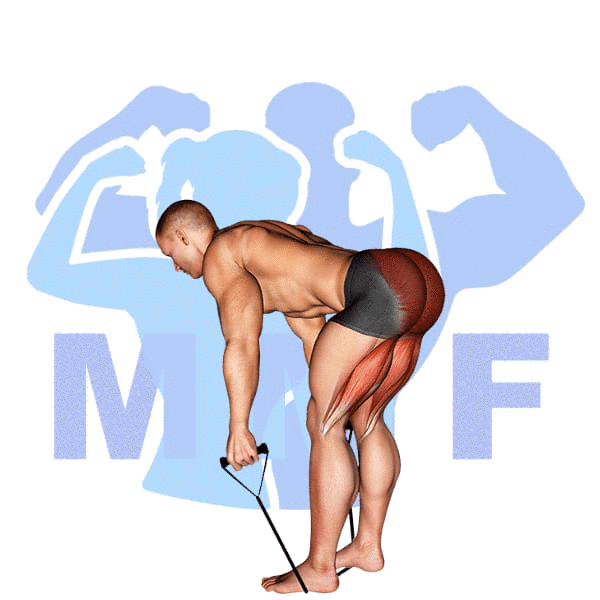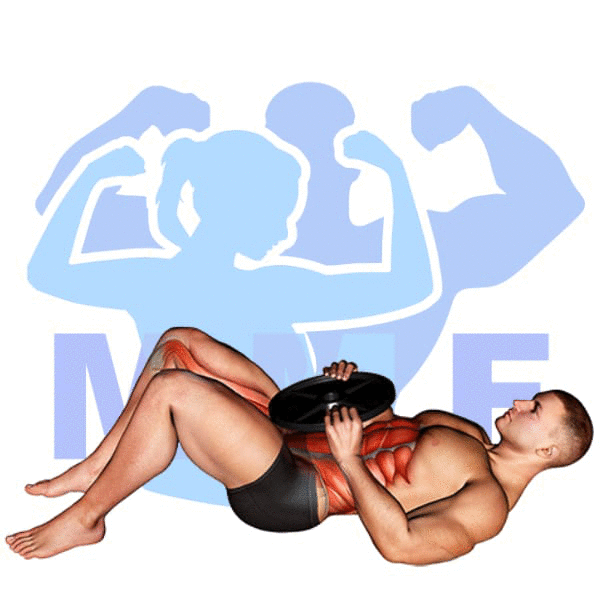Hammer Curls are a staple to any bicep routine. If you are looking to develop long and bulging biceps check out these tips on proper hammer Curls.
Why the Hammer Curl Works
The hammer curl is popular for a few main reasons.
- The hammer curl benefits from having a neutral wrist position. With regular dumbbell curls you might feel your wrists weaken for the last few reps, this does not happen with the hammer curl.
- The hammer curl also forces you to stop your range of motion when your wrists are about parallel to the floor; this keeps the tension in your bicep muscles.
- The hammer curl also works the brachialis–the muscle that runs along the outside of your upper arm–which helps add a more full, shapely look to the arms.
- The hammer curl is a great variation to use for mixing up your arm workout because it works the arm in a different angle and alternately works the bicep brachii from standard curls that help further develop the biceps and forearms for a complete look.
Brachioradialis Muscle Physiology Summary
Brachioradialis is located at the lateral supracondylar ridge of the humerus and responsible for flexion of the elbow; pronation and supination.
Dumbbell Hammer Curl Summary
- Primary Muscle Worked: Forearms Brachioradialis
- Other Muscles (Secondary) Worked: Biceps, Shoulders, Traps
- Equipment: Dumbbell
- Mechanics Type: Isolation (An exercise that involves one joint movement).
- Force: Pull (A movement toward the center of the body during the concentric contraction of the target muscle).
- Utility: Auxiliary (An supplementary exercise that supports a primary exercise. Auxiliary exercises may place higher relative intensity on a specific muscle or a head of a muscle).
Target Muscles Used for Dumbbell Hammer Curl
- Brachioradialis
Synergist Muscles Worked When Performing Dumbbell Hammer Curl
- Brachialis
- Biceps Brachii
Stabilizers Worked When Performing Dumbbell Hammer Curl
- Deltoid, Anterior
- Trapezius, Upper
- Trapezius, Middle
- Levator Scapulae
- Flexor Carpi Radialis
- Extensor Carpi Radialis
Antagonist Stabilizers Worked When Performing Dumbbell Hammer Curl
- None
Correct Exercise Procedure Use for Dumbbell Hammer Curl
Dumbbell hammer curl can be done in either standing or sitting position and by alternating your arms lifting one at a time or both lifting together.
- Stand with your feet about shoulder width apart with a dumbbell in each hand at your sides.
- With your palms facing in towards legs, curl dumbbells up one at a time keeping your elbows tight against your body until thumb meets the shoulder.
- Squeeze and pause briefly, then return the weight to the starting position.
- Alternate between arms until muscular failure has been reached.
Tips for Performing Dumbbell Hammer Curl
By using the tips mention below will help the muscle(s) full development by incorporating more muscle fibers per rep, thus increasing the muscle’s size and strength.
- Practice proper form and control. Starting with this exercise, or any lift you have not performed before, use light weight until you have the full range of movement with proper extension and contraction completed. Complete contraction is important for your full muscles development.
- Keep the elbows locked and close to your body. Through the whole hammer curl, keep your elbows locked in at your sides. If you find that when you are doing the hammer curl that your elbows are moving forward, lower your weight.
- Keep your wrist in a lock position. Keep your wrist in a locked position throughout the movement with no supination.
- Move naturally throughout the movement. Move naturally throughout the movement by swaying your body slightly as you lift the weights.
- Don’t move weight past tension point. It’s important not to curl the weight past the point where tension leaves the forearm and bicep.
- Use a weight that allows smooth and controlled motion. This will avoid cheating which in turn will take the emphasis off the forearm and bicep.
Frequent Mistakes Made While Performing Dumbbell Hammer Curl
Performing the exercise improperly, often referred to as cheating, will not allow for the muscle and muscle fibers to use their fullest potential, resulting in not achieving desired development of the muscle.
- The movement is performed too fast. If the movement is performed too fast, you will not allow full usage of all muscle fibers.
- You are using too much weight. A mistake for many lifters is trying to lift too much weight. Make sure to use correct weight, without cheating. You will not allow yourself to have proper form and complete range of motion.
- Too much upper body movement. If you use your upper body as momentum (cheating) to help in lifting the weight, you are partially defeating the lift and will not gain the muscle desired.
- You are moving weight past tension point. If you move the weight past the tension point at the top of this movement, this will allow your forearm and bicep to rest, thus not allowing as great of substantial gains as you are hoping for.
- Supination of the wrist. If you twist your wrist with this exercise, you will take tension off the forearm and put the tension on your bicep, as in a dumbbell curl.
- Swinging arms to lift the weight. Swinging your arms (cheating) will all but eliminate any benefits hope to be gain with exercise.
Variations of Exercise or Equipment Use for Dumbbell Hammer Curl
A variation of a specific exercise is intended to work different subgroups of muscles, or work the same muscles in slightly different ways. There are many exercise variations to this strength exercise. Some of the variations use for Hammer Curl:
- Barbell Reverse Curl. This is an excellent exercise for directly targeting the forearm (Brachioradialis). The barbell reverse curl is performed exactly like the barbell curl except your hands are reverse looking towards the floor. Using the barbell your arms work together with this exercise.
- Barbell Reverse Preacher Curl. Your arms work together with the reverse preacher curl and performed the same as the preacher curl except palms are facing down. The benefit with this exercise, when executed correctly, arms are locked in place when resting on the pads and eliminates using the body to help with the lift.
- Cable Reverse Curl. Again, this performed the same as the cable curl but with palms facing the floor. The benefit of using cables, it’s easier to keep tension on the forearm throughout the movement.
- Lever Reverse Preacher Curl. Hold the handles with an overhand grip and curl up like you would a barbell reverse preacher curl. One of the differences about using a machine, most have handles that swivel allowing for wrist comfort, this can be beneficial if having any wrist problems. Like with the cable reverse curl this machine allows you to keep the tension on the forearm throughout the movement.
Other Exercises to Compliment Dumbbell Hammer Curl
- Dumbbell Wrist Curl. With using an underhand grip and working each arm individually, dumbbell wrist curl is an excellent exercise for strengthening the wrist flexors (inner forearm).
- Barbell Reverse Wrist Curl. With an overhand grip, the barbell reverse wrist curl works both forearms together in developing the wrist extenders (back of forearm).
- Barbell Wrist Curl. Barbell wrist curl is another complimentary exercise that can be used to strengthen the wrist flexors (inner forearm) using an underhand grip working both arms together.
- Dumbbell Seated Supination. Dumbbell Seated Supination targets and strengthens the forearm supinator. This exercise is an external rotation of the forearm resulting in the palm moving up.
- Dumbbell Seated Pronation. Dumbbell seated pronation targets and strengthened the forearm pronators. This exercise has an internal rotation of the forearm resulting in the palm moving down.
Bottom Line
Limited strength in the forearms can result in fatigue when lifting weights or while completing many tasks required by hands, like cooking, yard work and holding power tools. Dumbbell hammer curls will help strengthen your forearms so you can complete an everyday task without arms being painfully worn out. I prefer the dumbbell hammer curl exercise to be completed during or after my biceps workout. The biceps are fatigue from their t, therefore, less likely to help the forearms in lifting the weight.




